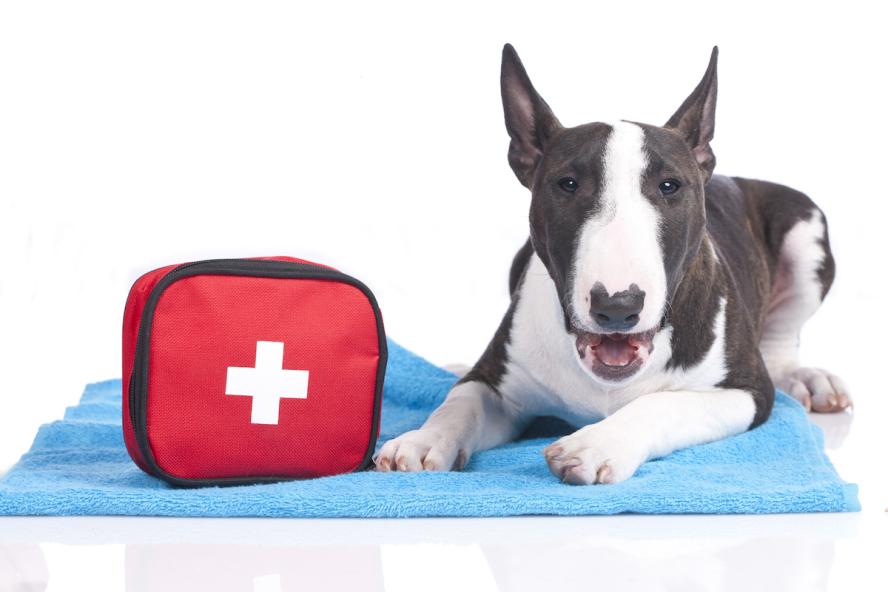-
About
- Leadership & Faculty
- News & Events
-
Academics
- Graduate
- Advanced Clinical Training
- Continuing Education
- Academic Departments
- Academic Offices
- Simulation Experiences
-
Student Life
- Offices
-
Research
-
Hospitals & Clinics
- Emergency Care
- Hospital Services
-
Community Outreach
- Volunteer
Pet First Aid
5 things to know

April is National Pet First Aid Awareness Month. Here are five areas of recommendations.
Emergency contact information
We never know when an accident will occur, so having a list of phone numbers and addresses of nearby emergency and specialty hospitals (within a 60-minute drive of your home) is key. Not all hospitals offer the same services—some primary care veterinarians have urgent care/emergency after hours and there are specific urgent care centers, emergency only centers, and specialty hospitals (emergency with other specialized services such as internal medicine, surgery, etc.).
Know which hospitals fall under each category, which will perform emergency surgeries, and which can hospitalize your pet if needed. Always call a hospital ahead of arrival to make sure it can handle the type of emergency your pet is experiencing and it is able to see your pet. If the hospital is not able to see your pet, it will generally direct you to the next closest hospital that meets your needs.
Print your pet’s medical records
A prepared file of all printed medical records of your pet can save precious time during an emergency. This includes rabies/vaccine certificates, itemized receipts, discharges, physical exam notes, etc. Write the medications your pet is currently taking, including the name of the drug, the amount in milligrams per dose, how often it is given, and what times in the day your pet takes this drug. Bring this file with you if you are traveling with your pet or leave this file accessible to your pet sitter/boarding facility.
If you are out of town and someone is watching your pet, ensure you have discussed what you would want to happen to your pet if you were unable to answer your phone. e.g. Do you have a limit to the cost of medical care you want performed without your direct approval? Would you want CPR performed if necessary? These are difficult scenarios to think about but important to consider.
Try to calm your pet
Even the nicest pet (dog or cat) can bite or become aggressive when in pain or scared. Use blankets or towels to wrap your pet if they are flailing or employ a muzzle if they are trying to bite. Do NOT try to administer first aid to your pet if it is unsafe to do so due to aggression. Bring them to the closest veterinary hospital where the staff is trained to safely handle your pet.
Assemble a pet first aid kit
To prepare for an emergency, put together a pet first aid kit at home. Some people make kits to keep in both the house and the car. All materials can be found over the counter at either a pharmacy, pet store, or online. Please do NOT use a first aid kit in place of seeking veterinary care. If your pet needs this first aid kit, please contact a veterinary professional to discuss next steps for care.
Items to include:
- Gloves: Disposable latex/non-latex gloves should be worn when handling wounds on your pet.
- Gauze: Clean gauze pads/sponges can be used to wipe down and clean smaller wounds and/or pack large wounds.
- Bandage material: Have non-adherent pads, rolls of cast padding, rolled gauze, and cohesive bandage (Coban or Vetrap). For superficial wounds, place non-adherent pad on the wound then roll cast padding, followed by rolled gauze, and the cohesive bandage onto the limb. If there is a deep wound with profuse bleeding, pack the wound with gauze sponges and wrap with these materials. Do not wrap bandages too tightly on limbs or around the chest. If you place a bandage at home, this is simply to help stop bleeding until you get to a veterinarian.
- Kwik-Stop/Styptic powder: A powder to stop bleeding from the nails. Pour the power into the cap of the container and press the bleeding nail into the powder. Pack the nail with more powder if needed.
- Saline flush: Ideal for flushing and cleaning external wounds but if not available, tap water is fine to use. Do not use rubbing alcohol or hydrogen peroxide.
- Eye flush: An eye-safe solution to help flush away debris or caustic substances (use only if your pet will allow you to safely handle near the face).
- Medications: Hydrocortisone cream (do not use on open wounds), antibiotic ointment, antihistamines (discuss appropriate dose with your vet), anti-anxiety medications (if prescribed by your vet), medications that were prescribed by your vet for emergency use based on your pet’s medical history (emergency inhaler, etc.).
- Blankets and towels: To dry off, keep warm, and to help restrain your pet safely in a stressful situation.
- Basket muzzle (for dogs): To help keep your dog, yourself, and people around you safe in a stressful situation. Even nice, calm dogs can bite when painful or scared.
- Extra leash (for dogs)
Know your pet
Make sure you are aware of your pet’s specific risk factors, whether breed-related or activity-related. For example, short-faced or brachycephalic breeds get overheated quickly and are at risk of upper airway obstruction (which can be fatal). If you have active dogs who go hiking with you, bring water for them, bring along a portable first aid kit, keep them leashed, etc. Be careful when playing ball with your dog as the right sized ball can get lodged down the throat and prevent breathing. Assess the risks in any situation and be prepared.
Shaylan Meyer is a resident in the small animal emergency and critical care service at Henry and Lois Foster Hospital for Small Animals at Cummings School of Veterinary Medicine.
Department:
Foster Hospital for Small Animals